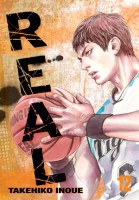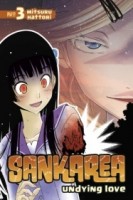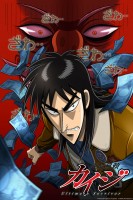My News and Reviews
I have been so incredibly busy recently (which is why I don’t have any fun online discoveries to share with you all this week) but I was still somehow able to post a few things here at Experiments in Manga. The most recent manga giveaway is underway and there is still time to enter for a chance to win Sankarea: Undying Love, Volume 1 by Mitsuru Hattori. For those of you interested in the absurd amount of manga that make its way onto my bookshelves, October’s Bookshelf Overload was also posted. And finally, I reviewed the second edition of Hedi Varian’s The Way of Taiko. I myself am a taiko player, and there are very few books in English devoted to taiko, so I am very happy to see the volume back in print in a new edition.
Quick Takes
 His Arrogance by Takashi Kanzaki. Despite being part of Digital Manga’s 801 Media imprint, His Arrogance isn’t exceptionally explicit. It’s also not very interesting and I found myself bored with both the story and the characters. Even the artwork, while fairly solid, wasn’t particularly outstanding or noteworthy. Although, occasionally Kanzaki would capture a look of utter adoration that was delightful to see. Ryou’s father established a modeling agency specifically to aid Ryou’s older brother Tomohito in his career. In addition to helping out with the company, Ryou also lives in the dorms with the models. Kazuto is one of those models, one of Ryou’s classmates, and the self-proclaimed rival of Tomohito. I think I would have enjoyed His Arrogance more if Kanzaki would have kept the manga’s focus on Ryou and Kazuto’s relationship. Instead, Ryou’s rather bizarre and vaguely incestuous bond with his brother severely encroaches upon the story. Perhaps it was supposed to be played as comedy, but it just ends up being kind of weird and awkward.
His Arrogance by Takashi Kanzaki. Despite being part of Digital Manga’s 801 Media imprint, His Arrogance isn’t exceptionally explicit. It’s also not very interesting and I found myself bored with both the story and the characters. Even the artwork, while fairly solid, wasn’t particularly outstanding or noteworthy. Although, occasionally Kanzaki would capture a look of utter adoration that was delightful to see. Ryou’s father established a modeling agency specifically to aid Ryou’s older brother Tomohito in his career. In addition to helping out with the company, Ryou also lives in the dorms with the models. Kazuto is one of those models, one of Ryou’s classmates, and the self-proclaimed rival of Tomohito. I think I would have enjoyed His Arrogance more if Kanzaki would have kept the manga’s focus on Ryou and Kazuto’s relationship. Instead, Ryou’s rather bizarre and vaguely incestuous bond with his brother severely encroaches upon the story. Perhaps it was supposed to be played as comedy, but it just ends up being kind of weird and awkward.
 Real, Volume 12 by Takehiko Inoue. Many people assume that Inoue’s masterpiece Vagabond would be my favorite of his manga, but that honor probably goes to his series Real. I absolutely love Real, and I’m not even a huge fan of basketball. Although the sport is certainly an incredibly important part of the series, to me Real is much more about the characters themselves, their internal and external struggles, and their development as people. While the previous volume had a particular focus on Nomiya and his tryout for the Tokyo Lightnings, the twelfth volume turns its attention to Togawa and his efforts to become a better team player—something that is extremely difficult for him. Despite of or maybe because of his natural skill as an athlete, Togawa has always been very critical, harsh, and demanding of his fellow players. If there is a theme to Real, Volume 12, I would say that it is change, and specifically the need, desire, and willingness for change. Several of the manga’s characters must make important decisions about who they are and who they want to be in this volume.
Real, Volume 12 by Takehiko Inoue. Many people assume that Inoue’s masterpiece Vagabond would be my favorite of his manga, but that honor probably goes to his series Real. I absolutely love Real, and I’m not even a huge fan of basketball. Although the sport is certainly an incredibly important part of the series, to me Real is much more about the characters themselves, their internal and external struggles, and their development as people. While the previous volume had a particular focus on Nomiya and his tryout for the Tokyo Lightnings, the twelfth volume turns its attention to Togawa and his efforts to become a better team player—something that is extremely difficult for him. Despite of or maybe because of his natural skill as an athlete, Togawa has always been very critical, harsh, and demanding of his fellow players. If there is a theme to Real, Volume 12, I would say that it is change, and specifically the need, desire, and willingness for change. Several of the manga’s characters must make important decisions about who they are and who they want to be in this volume.
 Sankarea: Undying Love, Volume 3 by Mitsuru Hattori. The best thing about the third volume of Sankarea? Rea’s father isn’t in it. (That guy is an utter creep.) Hattori also introduces an important new character—Darin Arciento Kurumiya, who is very interested in zombies and therefore very interested in Rea. She also brings along with her a marvelously ridiculous zombie owl. In addition to Kurumiya’s introduction, this particular volume also focuses on Rea and her attempt to return to school after her zombification. There are some challenges, to say the least. Her body continues to decay and fall apart and since she doesn’t really feel pain anymore she has a tendency to overtax herself physically. I was a little surprised to see how toned-down the extraneous fanservice was in this volume. It’s still there, but it’s not nearly as prominent or distracting as it once was. I am honestly enjoying Sankarea much more than I ever expected that I would. It’s a very odd series with very odd characters and I can appreciate its quirkiness. Rea and Chihiro are both weirdos, but they make a cute not-quite-couple.
Sankarea: Undying Love, Volume 3 by Mitsuru Hattori. The best thing about the third volume of Sankarea? Rea’s father isn’t in it. (That guy is an utter creep.) Hattori also introduces an important new character—Darin Arciento Kurumiya, who is very interested in zombies and therefore very interested in Rea. She also brings along with her a marvelously ridiculous zombie owl. In addition to Kurumiya’s introduction, this particular volume also focuses on Rea and her attempt to return to school after her zombification. There are some challenges, to say the least. Her body continues to decay and fall apart and since she doesn’t really feel pain anymore she has a tendency to overtax herself physically. I was a little surprised to see how toned-down the extraneous fanservice was in this volume. It’s still there, but it’s not nearly as prominent or distracting as it once was. I am honestly enjoying Sankarea much more than I ever expected that I would. It’s a very odd series with very odd characters and I can appreciate its quirkiness. Rea and Chihiro are both weirdos, but they make a cute not-quite-couple.
 Kaiji: Ultimate Survivor directed by Yūzō Satō. After watching and enjoying Akagi, watching Kaji seemed to be a natural choice. It’s another anime series based on a manga Nobuyuki Fukumoto featuring some exceptionally intense and legitimately life-threatening gambles. But whereas Akagi is calm, cool, and collected, Kaiji is hot-blooded and frenetic. (The actor who voiced Akagi also voiced Kaiji; I was quite impressed by his range and how differently he was able to play the two characters.) Kaiji also has extremely bad luck. His troubles really begin when a friend defaults on a loan that Kaiji agreed to co-sign. A man comes to collect but Kaiji, himself in debt, has no way to repay the loan. But he is given an extraordinary opportunity to clear the debt by participating in a series of absurd and increasingly dangerous gambles. Kaiji is incredibly intense and occasionally disturbing with a huge focus on the psychological aspects of the story and the mental torment and despair of its characters. Even a seemingly simple game of rock-paper-scissors can be a traumatic experience.
Kaiji: Ultimate Survivor directed by Yūzō Satō. After watching and enjoying Akagi, watching Kaji seemed to be a natural choice. It’s another anime series based on a manga Nobuyuki Fukumoto featuring some exceptionally intense and legitimately life-threatening gambles. But whereas Akagi is calm, cool, and collected, Kaiji is hot-blooded and frenetic. (The actor who voiced Akagi also voiced Kaiji; I was quite impressed by his range and how differently he was able to play the two characters.) Kaiji also has extremely bad luck. His troubles really begin when a friend defaults on a loan that Kaiji agreed to co-sign. A man comes to collect but Kaiji, himself in debt, has no way to repay the loan. But he is given an extraordinary opportunity to clear the debt by participating in a series of absurd and increasingly dangerous gambles. Kaiji is incredibly intense and occasionally disturbing with a huge focus on the psychological aspects of the story and the mental torment and despair of its characters. Even a seemingly simple game of rock-paper-scissors can be a traumatic experience.

REAL is probably my favorite manga too. At least ongoing. I can’t wait to see if Scorpion Shiratori is able to step foot in the wrestling ring again! I hope the next volume focuses on that a bit.
Me, too! Takehiko left us with quite a cliffhanger at then end of volume twelve! I’m very interested in seeing how things play out.